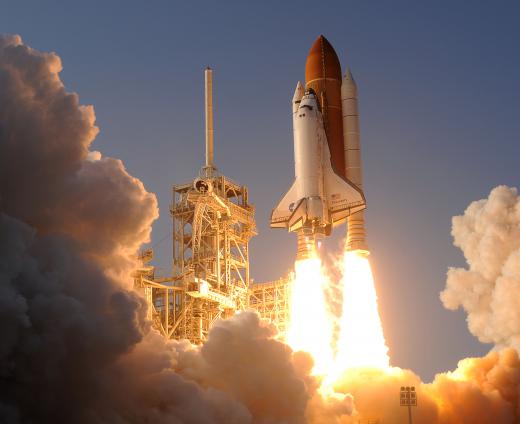What Is the International Space Station?
 Michael Anissimov
Michael Anissimov
The International Space Station (ISS) is a research facility in low Earth orbit, orbiting at an altitude between 320 km (199 mi) to 345 km (214 mi). As of May 2007, the International Space Station consists of four small rooms, known as "pressurized modules" in engineering parlance, and has a living capacity for three astronauts. The station is scheduled to be completed as of 2010, and will include a total of 10 pressurized modules, alongside a Soyuz spacecraft functioning as a lifeboat and a large unpressurized truss structure for solar panels.
Currently, the International Space Station is the only permanently manned facility in orbit. It was created as a way for five space agencies to share the high costs of launching and maintaining an in-orbit facility. The five agencies participating in the ISS project are NASA (United States), Roskosmos (Russia), JAXA (Japan), CSA (Canada), and the ESA (European Union). By the time the station is completed in 2010, the entire project will have cost around $100 billion USD or more. The International Space Station has been in orbit since 1998 but only occupied since 2000. It has already had 124 distinct visitors, including five paying space tourists, who paid $20 million US Dollars (USD) each to visit the station.

The first module of the International Space Station, Zarya (meaning "dawn" in Russian), was launched in 1998, and orbited autonomously for almost two years due to delays in constructing Zvezda ("star" in Russian), a service module with sleeping space for two astronauts. Zvezda also contains a shower and toilet, exercise equipment, a galley for food preparation, and is the largest module on the ISS, by a small margin. Shortly after Zarya was launched, the American Unity Module was attached to it. True to its name, Unity functions as a connecting node between other modules, and is sometimes referred to as Node 1. The final module currently in orbit is the US-built Destiny Laboratory Module, where scientific research is conducted.

From late 2007 to 2010, six additional modules are to be launched: Node 2, the Columbus Laboratory Module (European), Japanese Experiment Module, Multipurpose Laboratory Module (Russian), Node 3, and the Docking Cargo Module. The goal is for the space station to be completed by 2010. Most of the modules have a projected operating lifespan of 15 years, so the first module may need replacing or discarding in 2013, but the majority of the station should remain operational through 2020.
AS FEATURED ON:
AS FEATURED ON:














Discussion Comments
@ShadowGenius
This is an interesting idea, but they would have to take into account the fact that there is no gravity in space. When astronauts return to earth after a long period of time spent in the Space Station, they often have to go through therapy to re-acquaint their bodies with the constraints of gravity. Bodies weaken when weightless.
If work continues on this station, I wonder what its projected capacity will be. Will it someday turn into a complex the size of a skyscraper? Perhaps it may even approach the size and population of a city.
This space station has people from a variety of nations. The unity in space may help to enhance unity on earth. As we realize that we are all humans on a shared planet, we will be enabled to turn our eyes outward, and vice versa. That being said, I wonder what the language of space is, and how they communicate on the International Space Station.
As of 2010, the ISS has had 196 visitors and is currently housing its 24th crew. Besides the five countries that have space programs involved, there are ten other countries involved in some way with the space station.
The Space Station has about 18,000 cubic feet since the most recent module was added. This is about the equivalent of two three-bedroom houses. So far, the Italians, European Union, Russia, Japan, the United States, and Canada have built modules for the International Space Station.
These nodules have allowed the space station to host 400 different experiments. Scientists are also working on another 150+ current and planned experiments.
Post your comments